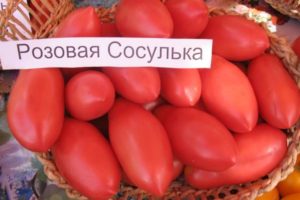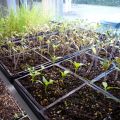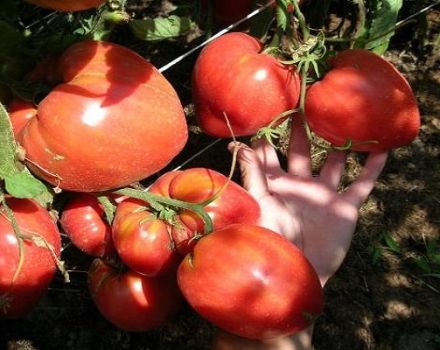Characteristics and description of the Family tomato variety, its yield
Want to feed your family early large tomatoes - select tomato Family F1. The only thing missing is that this hybrid is a guarantee of a high yield. Hybrids bear fruit confidently throughout the summer and rarely get sick. The main goal of breeders when developing a new variety is to reduce the plant's susceptibility to infections.
Description of fruits
Appetizing fruits have a rounded shape and deep red color in the phase of biological ripeness. The largest fruits of the family tomato weigh more than 300 g, for the evaluation and characteristics of tomatoes, a weight of 220 g appears.
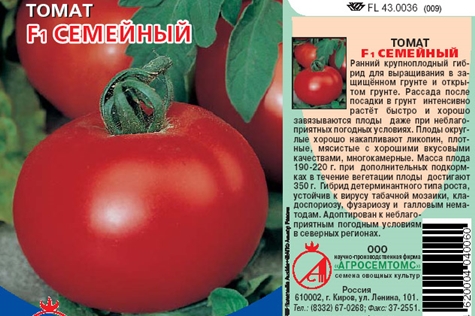
The pulp contains the useful substance lycopene. A person is able to prevent cancer and cardiovascular diseases by regularly consuming tomatoes and lycopene, which is part of them.
The family gains a large weight tomato with regular feeding with mineral and organic fertilizers. Without the use of fertilizers, it is unlikely that large-sized fruits will be obtained.
Variety characteristics
Early hybrid, harvest time 115 days from germination. It can be grown in a covering culture or open field. By type of growth, it belongs to the determinant group (100-110 cm) of tomatoes. Productivity depends on the timing of planting and the quality of care. The fixed figure is 7 kg per bush. Average value 4 kg per bush.
When planting, it is recommended to adhere to the scheme of 3 plants per 1 m². Observing it, summer residents receive from 15 to 20 kg per 1 m², even in adverse weather conditions. The family tomato is suitable for cultivation in the northern regions in a polycarbonate greenhouse.
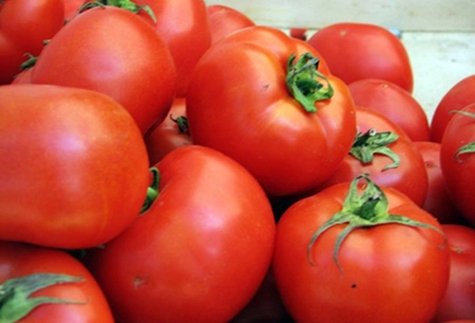
The hybrid has good immunity to a number of diseases:
- Tobacco mosaic virus.
- Cladosporium.
- Fusarium.
- Gall nematodes.
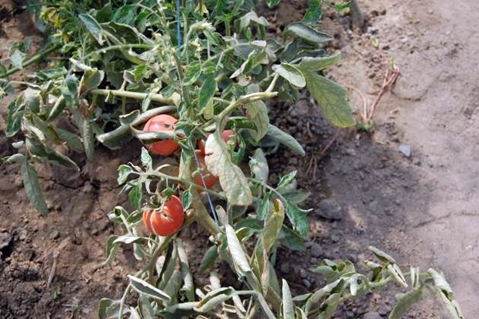
Planting and grooming tips
Basic principles to follow when growing Family Tomatoes:
- Observe the planting dates when sowing seeds for seedlings.
- When choosing a place for planting, observe the crop rotation.
- Plant seedlings in the ground (greenhouse), taking into account the weather conditions.
- During the entire growing season, fertilize with organic and mineral fertilizers.
Sowing seeds
Prepare the soil for sowing and water it 2 weeks before sowing. Take in addition to garden land:
- peat;
- humus;
- rotted sawdust;
- river sand;
- ash;
- fertilizers.
Mix all the components, pour the prepared soil into the seedling boxes and water well. By the day of planting, the soil will be completely ready for sowing. Cull the seeds before sowing.
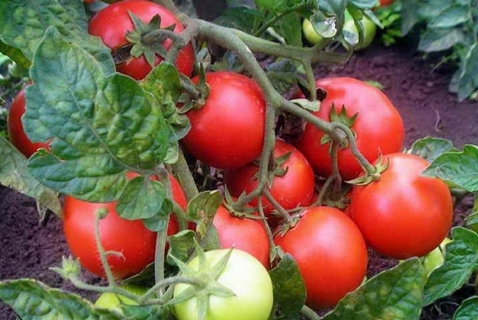
First, by visual inspection, remove seeds with defects and damaged, then empty (not viable) by soaking them for 10-15 minutes in water. Throw away those that float on the surface.
Place the seeds in seed boxes at intervals of 3 by 4 cm, cover with 1 cm of soil (humus). Cover the boxes with foil to preserve soil and air moisture and place them in a room where the air temperature does not fall below 23 ° C.
The film must be removed when 50% of the seeds are hatched. When all the seeds have hatched, the room temperature can be reduced to 18-20 ° C. This technique allows you to speed up the laying of the first flower brushes. The fruits will be larger in the future.
Picking
Picking - transplanting tomato seedlings from a common box into separate cups with a volume of 0.7 liters or more. Before picking, not later than 3 days, water the seedlings with fertilizer. It is recommended to use potassium nitrate with sodium humate. You can pour the fertilizer solution again after a week.
Transplanting seedlings
Seedlings ready for transplantation can be seen by their external signs. On the bush there are at least 5 leaves, its height is about 25 cm, the trunk is about 7 mm in diameter. It takes 45 to 55 days to form viable seedlings.
Family tomatoes can be planted in polycarbonate greenhouses after 20 April. Water the soil in the holes with warm water first, so that the roots are more comfortable when transplanting.
Transplant into open ground when stable high night temperatures are established. Ground frosts have a detrimental effect on young seedlings. The first week can be installed over the arch ridge with covering material.
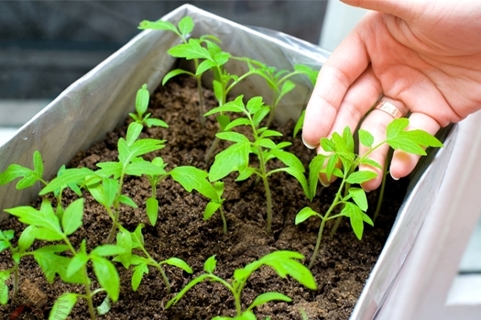
Summer care
In summer, you need to monitor the number of leaves, inflorescences and stepchildren. After the formation of the first fruits, the leaves below are removed. Repeat this procedure during the formation of fruits in all subsequent brushes.
As a result, when the fruits ripen in the next inflorescence, all the leaves below it must be torn off. During the summer, the trunk must be tied several times to the support with twine or other soft knitting. Throughout the season, you need to remove extra stepsons, not to let them outgrow.
How to water
Watering plays an important role in the development of plants. The first time after transplanting, tomatoes are watered after 2 weeks. Watering is not required for 2 weeks, as the root system is actively forming at this time. In the future, plants need weekly, abundant watering.
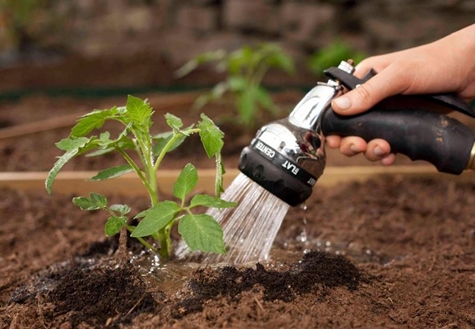
Growing tomatoes in a greenhouse can be accompanied by condensation on the polycarbonate and tomato leaves. Condensation is caused by increased air humidity. The moisture deposited on the leaves of tomatoes can provoke the development of an infection. Regular ventilation solves this problem.
Fertilizers
For the whole season, you need to spend at least 4 dressings. The greatest effect of fertilization is obtained if they are applied at the root in the morning in sunny weather. Be sure to feed the bushes when the fruits are being poured in the lower 4-5 brushes.
Root dressing must be combined with watering. Recipe for a 10 liter bucket of water: ammonium nitrate (20 g), potassium humate 3% (25 ml), magnesium sulfate (10 g), potassium sulfate (30 g).
Fruit picking
Conduct regular harvesting so that the growth of the apical shoot does not stop with the active formation of fruits. The first tomatoes are harvested when they are milky. In this way, the development and maturation of subsequent tomatoes are stimulated.
Reviews
Lyudmila, Perm
Tomatoes of the Family variety planted in the greenhouse made me happy. The tomatoes were all smooth, weighing from 120 to 150 g. The taste of the fruit is typically tomato, sweet and sour. She made homemade preparations: pickled tomatoes, cut them into salads, pickled. It is a pity that this is a hybrid and you cannot release seeds for propagation.
Daria, Yekaterinburg
I read reviews in winter and bought tomato seeds Family F1 from Agrosemtoms. I tried them this season and did not regret it. The first tomato was removed weighing 413 g, the subsequent removed tomatoes were smaller, but all of good taste. Good yield. The variety turned out to be resistant to diseases, the germination rate of seeds was good. Grown in a greenhouse.
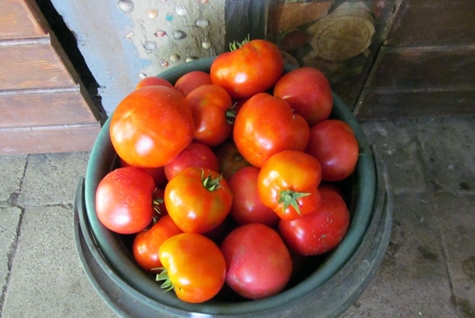
Conclusion
From the description of the Family tomato variety and its characteristics, it is clear that the determinant hybrid does not require much maintenance. The tomato harvest that hardworking summer residents get when growing this variety is enough to meet family needs. If you like pickled tomatoes, buy tomato seeds Family F1.

